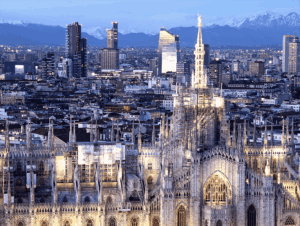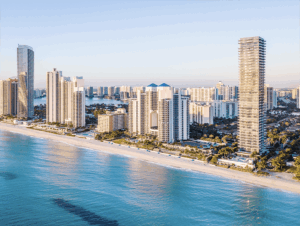Manhattan’s commercial real estate market has evolved into a sophisticated arbitrage economy, where savvy investors exploit vast pricing disparities between asset classes to generate extraordinary returns. The numbers tell a striking story: while premium office towers command record valuations of $2,800 per square foot, distressed buildings in the same borough trade at discounts ranging from 11% to 73% below comparable sales.
This pricing chasm has created one of the most compelling investment environments in decades, with total commercial sales volume surging 26% to $28.3 billion in 2024. The market’s bifurcation extends beyond simple supply and demand dynamics, revealing fundamental shifts in how urban real estate value is created, captured, and redistributed across different investor classes.
Office Market Polarization Drives Deal Flow
The office sector exemplifies this new arbitrage landscape, with transaction volume jumping 63% to $5.4 billion as investors position themselves on opposite ends of the quality spectrum. Premium assets continue attracting institutional capital at unprecedented valuations, while opportunistic players systematically acquire distressed properties for repositioning strategies.
Manhattan’s Class A office market demonstrated remarkable resilience, with high-end corporations including hedge funds, financial institutions, and law firms not only returning to physical offices but actively seeking premium amenitized buildings. This flight to quality has created a supply constraint in the luxury segment, driving Japan’s Mori Building Company to acquire an 11% stake in One Vanderbilt for $4.7 billion.
Simultaneously, 14 Class B and C buildings changed hands at substantial discounts, creating immediate equity opportunities for buyers with conversion or repositioning strategies. This dual-track market reflects a more nuanced understanding of office real estate as two distinct asset classes with divergent risk-return profiles.
Restaurant Real Estate Commands Premium Economics
While office markets fragment along quality lines, Manhattan’s restaurant sector presents the inverse arbitrage opportunity through acute scarcity pricing. Retail availability rates have plummeted to 12.8%, the lowest level since late 2014, creating fierce competition for any space capable of accommodating food service operations.
Restaurant operators now routinely invest $100,000 solely in ventilation systems to convert non-restaurant retail spaces, fundamentally altering the economics of commercial leasing. This capital expenditure reflects the underlying value proposition: food and beverage tenants consistently account for at least 35% of total leased square footage, demonstrating sustained demand that justifies premium conversion costs.
The sector’s pricing power stems from its immunity to e-commerce disruption, creating what industry participants describe as “ecommerce-proof” real estate. Consumer spending through food delivery applications reached a record $120 million in the first quarter of 2025, supporting both restaurant operators and landlords who can provide suitable spaces.
Specialty food establishments with strong social media presence command particularly aggressive lease terms, with single listings in trendy neighborhoods like the Lower East Side and East Village generating five to ten offers within days. This competitive dynamic has restored landlord pricing power in select retail categories while other segments continue struggling with digital disruption.
Regulatory Arbitrage Creates New Asset Categories
New York State’s housing policy framework has manufactured additional profit opportunities through targeted tax incentives that fundamentally alter development economics. The 467-m tax exemption delivers 90% tax savings for conversion projects in Manhattan below 96th Street, with 65% savings throughout the remainder of the city.
This regulatory structure has spawned a $2.4 billion market in office-to-residential conversions, with approximately 7 million square feet of office space acquired specifically for transformation into residential units. The arbitrage opportunity emerges from the spread between distressed office pricing and the enhanced economics enabled by the tax exemption program.
Development sales surged 53% to $5.5 billion, largely driven by investors recognizing the embedded value in obsolete office buildings when viewed through a residential development lens. Major players including Related and Extell have acquired Madison Avenue properties specifically for demolition and redevelopment, signaling institutional confidence in the conversion arbitrage strategy.
The conversion pipeline now encompasses approximately 8.3 million square feet of office space either under conversion or in active planning, stretching from Battery Park to Central Park. This systematic reallocation represents a fundamental rewiring of Manhattan’s spatial economics, with investors capturing value through regulatory navigation rather than traditional development.
Risk-Adjusted Returns Drive Strategic Allocation
Geographic disparities within Manhattan create additional arbitrage opportunities as different submarkets experience divergent demand patterns. Midtown accounts for 60% of office conversion activity, reflecting both the concentration of aging inventory and proximity to transportation infrastructure that enhances residential appeal.
Despite positive momentum, elevated interest rates and volatile long-term yields continue influencing investment decision-making. The 10-year Treasury yield is projected to end 2025 near 4.3%, maintaining pressure on capitalization rates across all commercial sectors.
However, the arbitrage opportunities created by pricing disparities and regulatory incentives offer risk-adjusted returns that remain attractive even in a higher rate environment. Cap rates are expected to begin compressing slowly from cyclical peaks, benefiting investors who can execute on current opportunities before broader market recognition eliminates the pricing gaps.
Economic uncertainty related to trade policy and fiscal spending has created additional volatility, though CBRE projects 10% growth in commercial real estate investment volume to $437 billion nationally. Manhattan’s position as a gateway market with unique regulatory advantages suggests continued capital flows toward well-structured arbitrage strategies.
Structural Implications for Urban Value Creation
The emergence of this arbitrage economy reflects deeper structural changes in how Manhattan generates and distributes real estate value. Traditional sector boundaries are blurring as investors recognize that regulatory frameworks and use-specific demand patterns, rather than underlying property characteristics, increasingly determine investment returns.
Restaurant operators’ willingness to invest $100,000 in ventilation systems demonstrates how use-specific infrastructure can create value premiums that transcend traditional real estate metrics. Similarly, office conversion economics depend more on regulatory navigation than construction costs, suggesting that policy expertise has become a critical component of real estate investment returns.
If all projected conversions proceed, Manhattan’s office availability rate would decline by 200 basis points from current levels of 18%, further concentrating value in remaining office assets while simultaneously addressing housing supply constraints through adaptive reuse.
Forward Investment Positioning
The arbitrage economy’s sustainability depends on continued regulatory support and sustained demand across converted asset classes. Recent approvals of the City of Yes initiative and pending Midtown South Mixed-Use Plan suggest municipal commitment to facilitating adaptive reuse strategies.
Investors positioning for the next phase of this cycle are focusing on assets that can benefit from multiple arbitrage strategies simultaneously—properties that qualify for tax incentives while occupying locations suitable for premium residential development or restaurant conversion. The intersection of distressed pricing, regulatory benefits, and use-specific demand creates the highest-return opportunities in the current environment.
As Manhattan’s property markets continue rewiring urban value creation, the investors who best understand these arbitrage mechanisms—whether regulatory, geographic, or use-specific—will capture disproportionate returns from the city’s ongoing economic evolution.
Richard Tayar is the founder of Columbus International, an international real estate firm bridging markets between the United States and Italy, with focus on New York, Milan, Florence, and Miami.



